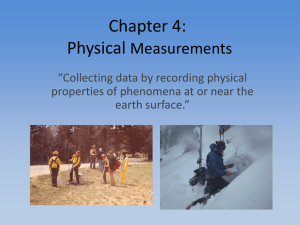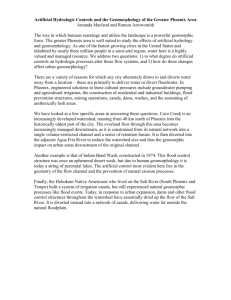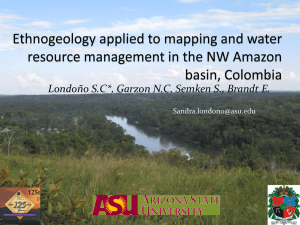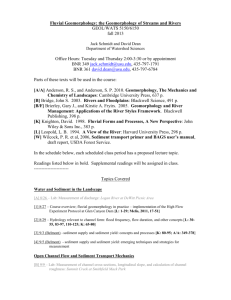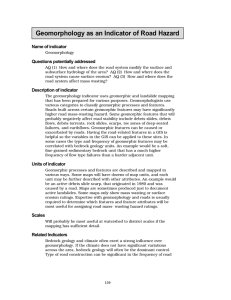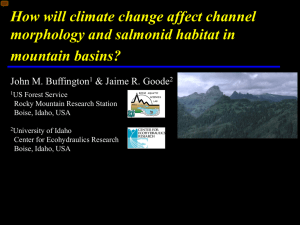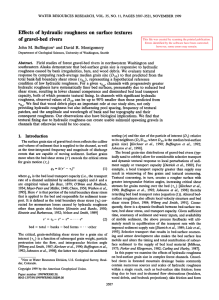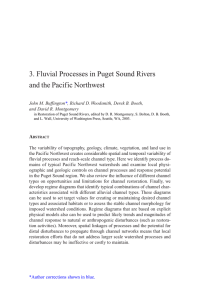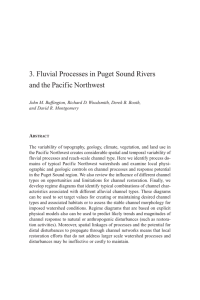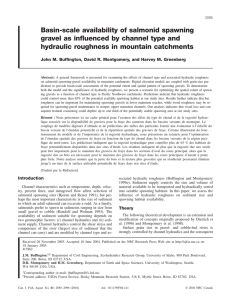Science
advertisement
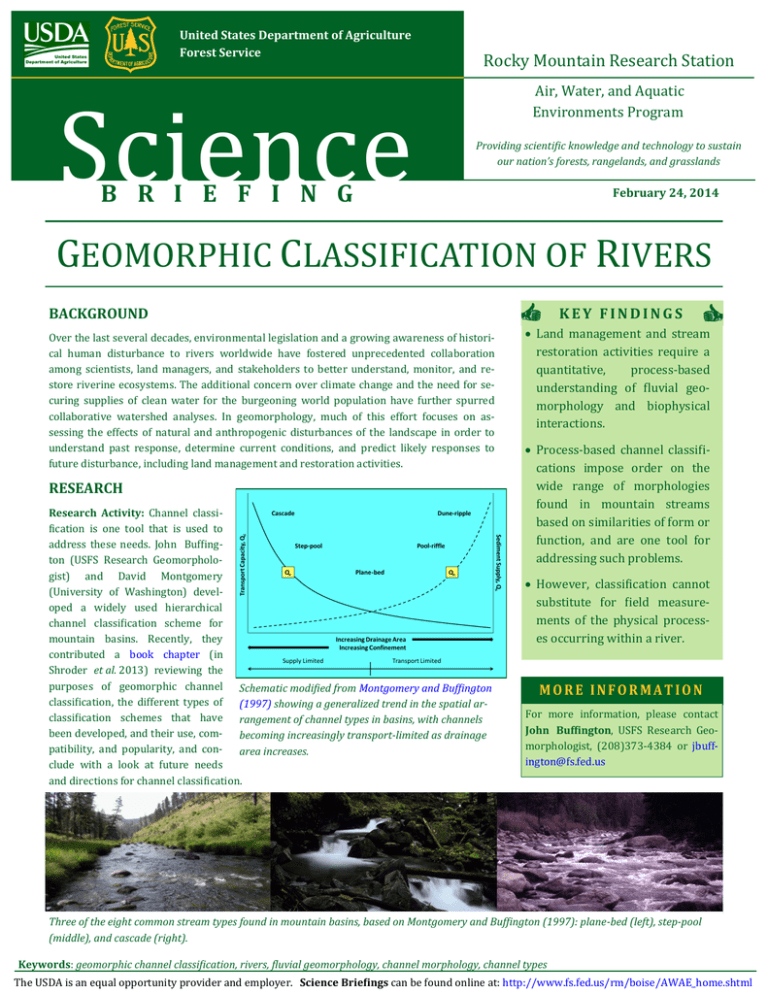
United States Department of Agriculture Forest Service Science Rocky Mountain Research Station Air, Water, and Aquatic Environments Program Providing scientific knowledge and technology to sustain our nation’s forests, rangelands, and grasslands B R I E F I N G February 24, 2014 GEOMORPHIC CLASSIFICATION OF RIVERS BACKGROUND Over the last several decades, environmental legislation and a growing awareness of historical human disturbance to rivers worldwide have fostered unprecedented collaboration among scientists, land managers, and stakeholders to better understand, monitor, and restore riverine ecosystems. The additional concern over climate change and the need for securing supplies of clean water for the burgeoning world population have further spurred collaborative watershed analyses. In geomorphology, much of this effort focuses on assessing the effects of natural and anthropogenic disturbances of the landscape in order to understand past response, determine current conditions, and predict likely responses to future disturbance, including land management and restoration activities. RESEARCH Research Activity: Channel classification is one tool that is used to address these needs. John Buffington (USFS Research Geomorphologist) and David Montgomery (University of Washington) developed a widely used hierarchical channel classification scheme for mountain basins. Recently, they contributed a book chapter (in Shroder et al. 2013) reviewing the purposes of geomorphic channel Schematic modified from Montgomery and Buffington classification, the different types of (1997) showing a generalized trend in the spatial arclassification schemes that have rangement of channel types in basins, with channels been developed, and their use, com- becoming increasingly transport-limited as drainage patibility, and popularity, and con- area increases. clude with a look at future needs and directions for channel classification. KEY FINDINGS Land management and stream restoration activities require a quantitative, process-based understanding of fluvial geomorphology and biophysical interactions. Process-based channel classifications impose order on the wide range of morphologies found in mountain streams based on similarities of form or function, and are one tool for addressing such problems. However, classification cannot substitute for field measurements of the physical processes occurring within a river. MORE INFORMATION For more information, please contact John Buffington, USFS Research Geomorphologist, (208)373-4384 or jbuffington@fs.fed.us Three of the eight common stream types found in mountain basins, based on Montgomery and Buffington (1997): plane-bed (left), step-pool (middle), and cascade (right). Keywords: geomorphic channel classification, rivers, fluvial geomorphology, channel morphology, channel types The USDA is an equal opportunity provider and employer. Science Briefings can be found online at: http://www.fs.fed.us/rm/boise/AWAE_home.shtml


